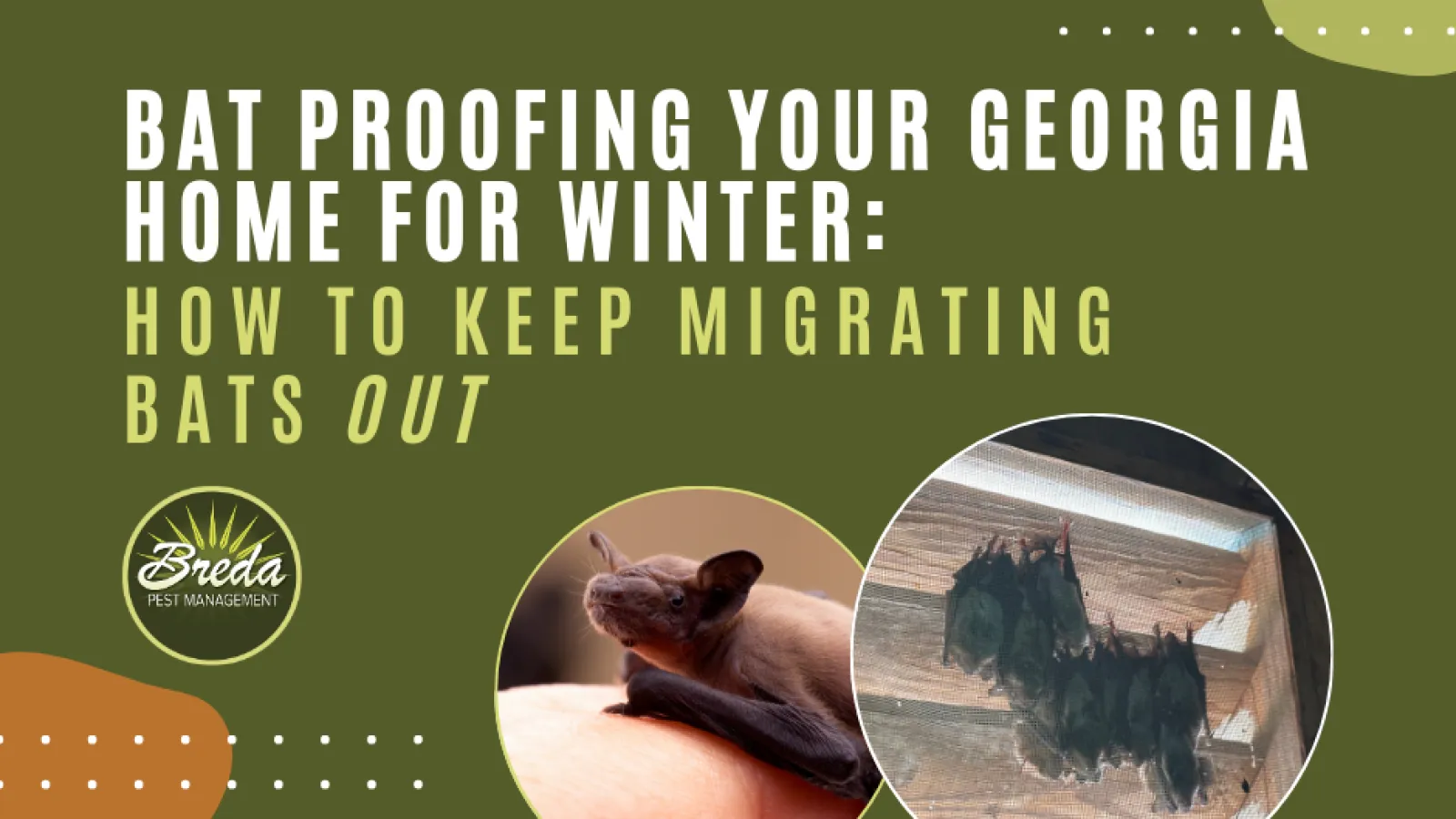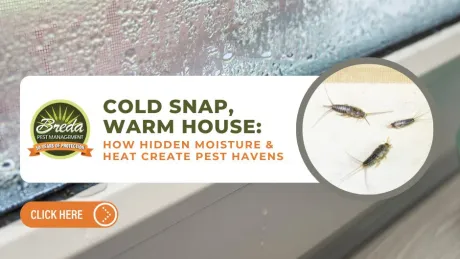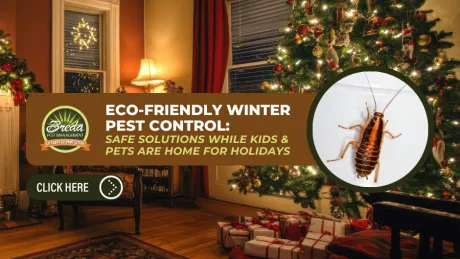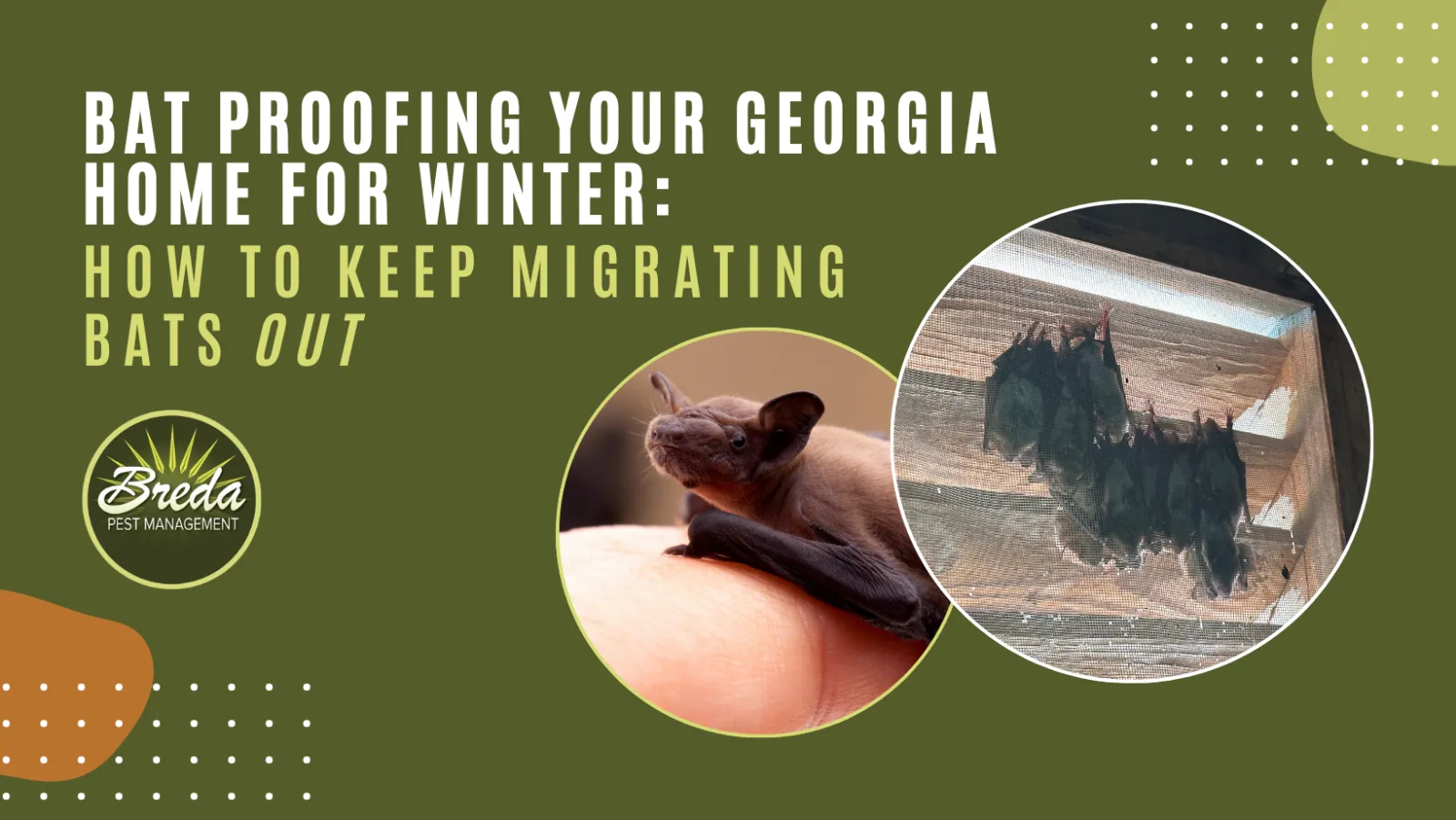
As the weather cools, it's the perfect time to start bat-proofing your Georgia home. Winter poses a unique challenge with bats in our region, as some species migrate while others seek warmth indoors to hibernate. Since Georgia is home to 16 species of bats, it's important to protect your attic from becoming a cozy bat roost. Understanding how bats enter your home and the steps you can take to keep them out will ensure a safe and bat-free winter.
In this blog, we'll cover:
The types of bats found in Georgia and their winter habits
Common entry points bats use to get into homes
Practical bat-proofing methods and when to seek professional help
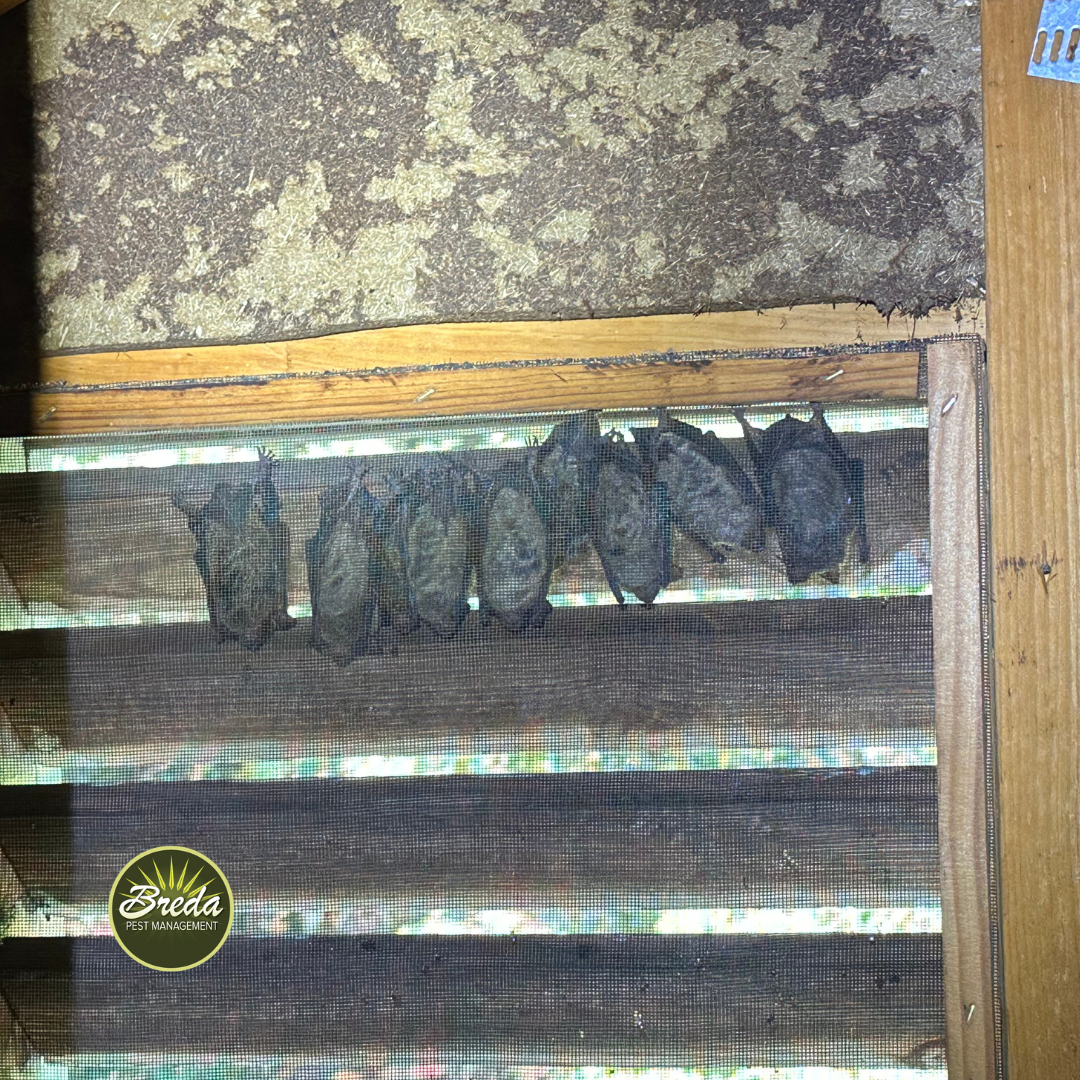
Why Bats Choose Your Home for Winter
Georgia's climate is ideal for a range of bat species, making homes in the state susceptible to bat invasions during the colder months. Many of the bats found in Georgia, like the Little Brown Bat, prefer to migrate south when temperatures drop, while others, like the Big Brown Bat, hibernate in attics, walls, and other warm spaces in homes. Without proper prevention, your attic could become an attractive shelter for hibernating bats. Since bats are crucial for pest control in the ecosystem, with each bat consuming hundreds of insects nightly, keeping them out without harming them is key.
Bats in Georgia: Migrators vs. Hibernators
In Georgia, both hibernating and migrating bats can become an issue, depending on the species:
Little Brown Bats are typically migratory, choosing to leave colder regions in search of warmer roosting grounds.
Big Brown Bats often hibernate rather than migrate, staying close to their summer habitats and finding insulated areas to wait out the winter.
Because bats can bring health hazards to your household, such as bat guano (droppings) that carry potential pathogens, bat-proofing is essential.
How Bats Enter Georgia Homes: Spotting Vulnerable Areas
The main entry points for bats in Georgia homes are gable vents, which allow airflow but can deteriorate over time due to Georgia's humidity, making it easier for bats to slip through. Behind the gable vent louvers, there's typically a flimsy screen that may tear or weaken, especially if it's been exposed to moisture and weather changes. This damaged screening is an open invitation for bats looking for a warm, safe space to hibernate.
Additional Common Bat Entry Points:
Soffits and Fascia Boards: Openings around rooflines where soffits meet walls can be accessible to bats.
Chimneys: Bats are excellent climbers and can easily get into chimneys without proper caps.
Attic Windows and Loose Shingles: Cracks around windows or roof shingles are also vulnerable spots for bat entry.
Tip: When inspecting these areas, use a flashlight at night and look for small openings or signs of bat activity, such as droppings or grease marks.
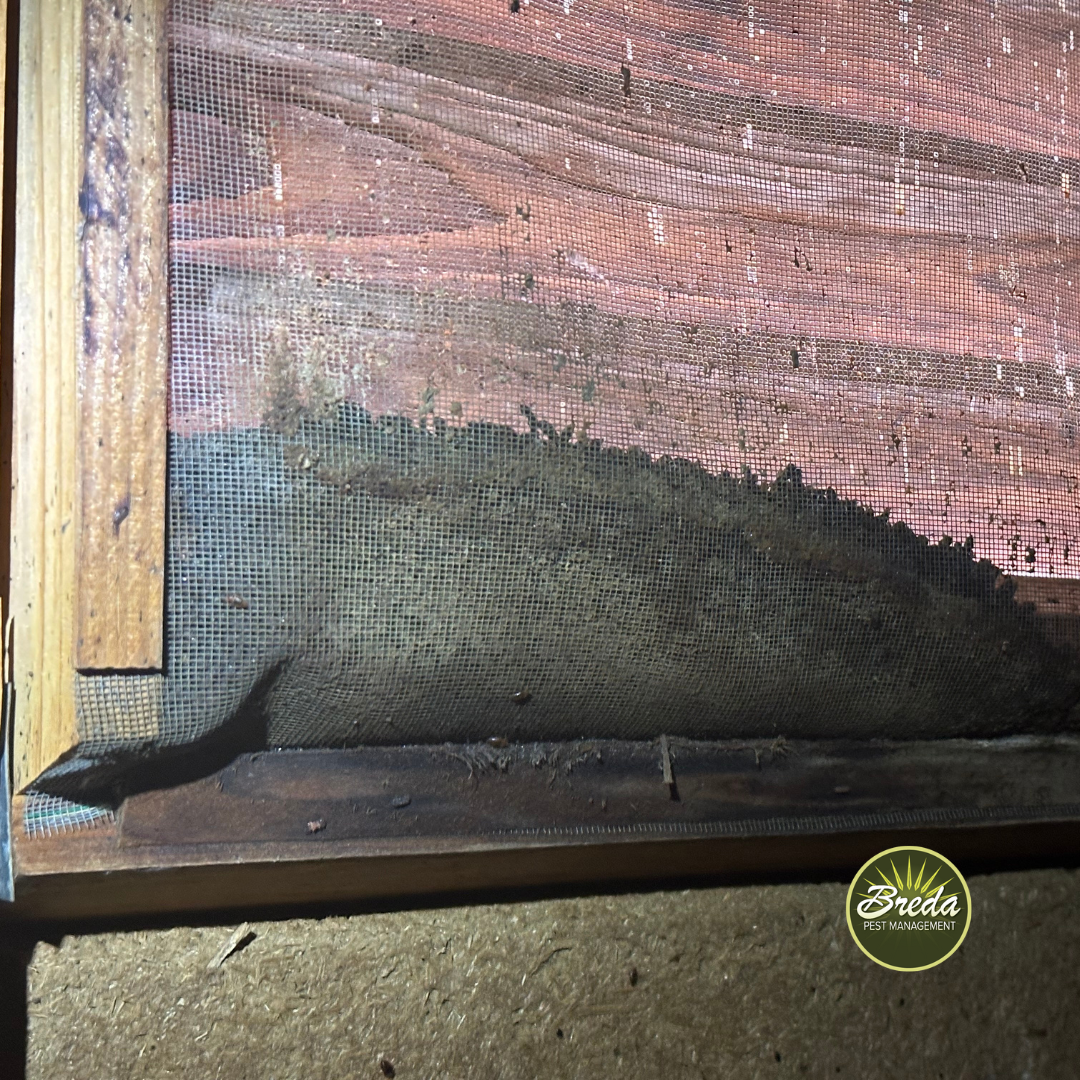
Effective Bat-Proofing Techniques for Georgia Homes
Here are some DIY bat-proofing steps you can take to protect your home from bats:
1. Install High-Quality Mesh Screens on Gable Vents
Replace flimsy gable vent screens with strong, rust-proof metal mesh to prevent bats from entering. Mesh screens should have small enough openings to keep bats out while still allowing airflow. Ensure the mesh is secured tightly and covers the entire vent.
2. Seal Entry Points with Caulk or Expanding Foam
For cracks around windows, roofs, and other small openings, use caulk or expanding foam to close off potential entry points. Be thorough with your inspection, as bats can squeeze through tiny gaps (as small as â of an inch!).
3. Install Chimney Caps and Roof Vent Covers
Install bat-proof chimney caps and vent covers to block these common entry points. Chimney caps also prevent other wildlife from entering and are an effective solution for keeping both bats and birds out of your home.
4. Check for and Repair Loose Shingles or Roofing Materials
Since bats may enter through damaged shingles or roofing materials, regularly inspect your roof for loose or damaged spots, especially before winter. Replacing loose shingles or worn-out materials can help you avoid unexpected bat visitors.
5. Limit Outdoor Lighting
Bats are attracted to areas with plenty of insects, and outdoor lights can be a magnet for bugs. Reducing outdoor lighting or switching to bat-friendly lights can make your home less attractive to both bats and their insect prey.
Identifying a Bat Infestation
Spotting signs of bats early can help you address the issue before it grows into a larger infestation:
Nocturnal Sounds: Bats are active at night, so hearing scratching or chirping sounds could be an indicator of their presence.
Bat Droppings (Guano): Bat guano tends to accumulate near entry points and often emits a strong, musty odor.
Grease Stains: Bats leave slight grease marks on walls or surfaces they brush against as they enter and exit.
When to Contact a Bat Control Professional
Bat-proofing can be challenging, especially if you already have bats roosting in your attic. Bats are protected by law in Georgia, which means it's often illegal to remove them during their maternity season (usually spring and summer). If bats are already in your home, a professional wildlife control technician from the BREDA Pest Management team can guide you through safe and legal bat exclusion methods.
Wildlife experts use one-way exclusion devices, which allow bats to exit but prevent re-entry. Once all bats have safely exited, they'll seal the entry points to prevent future invasions. If you're unsure about the presence of bats, a professional inspection can confirm whether bats or other pests are nesting in your attic.
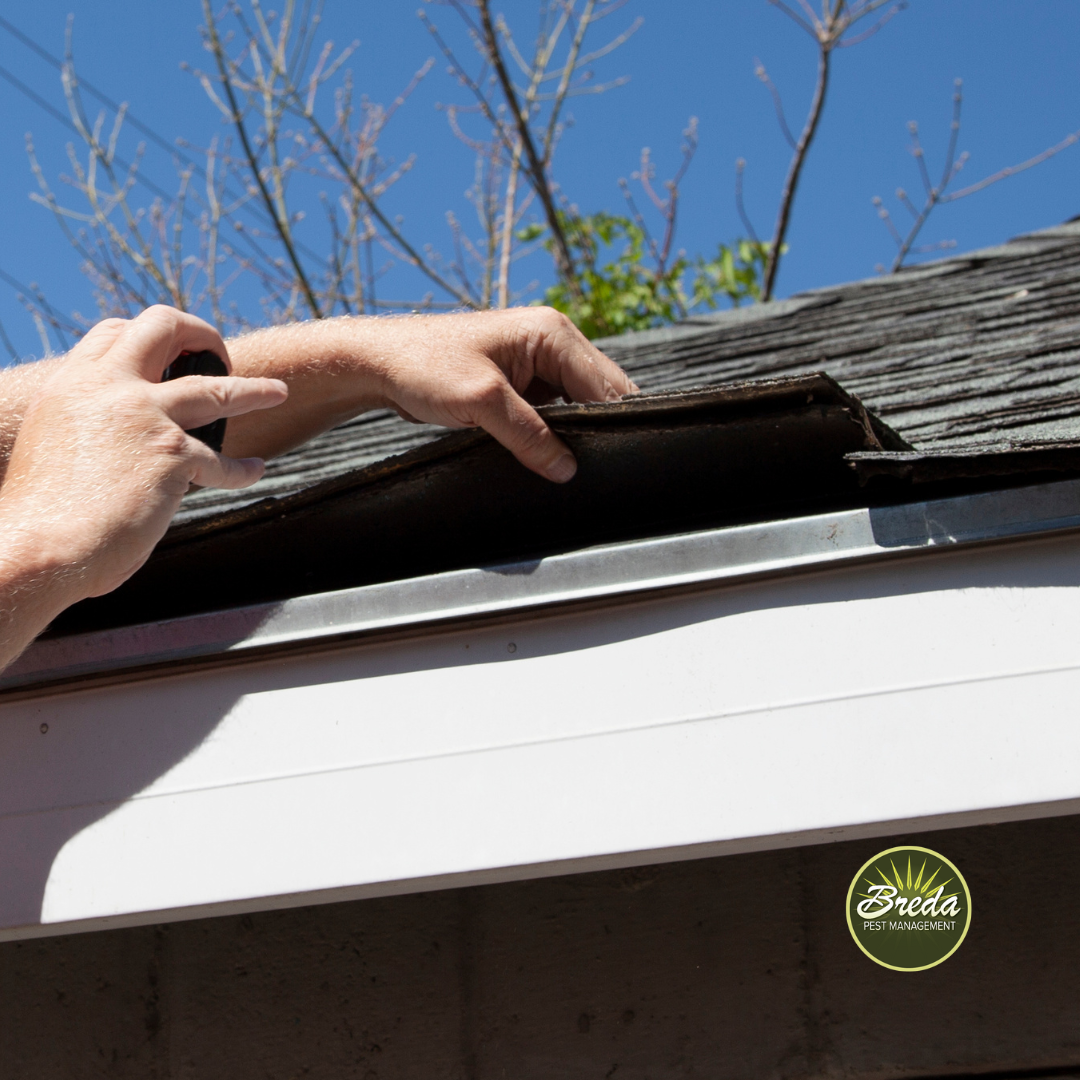
Long-Term Prevention Tips for a Bat-Free Home
Once your home is bat-proofed, regular maintenance can help keep it bat-free for years to come:
Regularly Inspect Gable Vents: Check for wear and tear at least once a year and replace any weak or deteriorating mesh.
Keep Trees Trimmed: Bats often roost in trees, so trimming any branches near your home can reduce their access to your roof and attic.
Conduct Semi-Annual Roof Inspections: Regularly inspect your roof and repair any damage promptly. Look for signs of wear, especially around vent openings, chimneys, and soffits.
Monitor for New Openings: Weather and aging can create new gaps around your home. Sealing these promptly will prevent bats and other pests from entering.
Protecting Bats While Protecting Your Home
Bats play a critical role in Georgia's ecosystem, especially in controlling insect populations. Implementing humane bat-proofing methods not only keeps your home bat-free but also ensures that bats can continue their beneficial role in the environment. By following the right steps, you can enjoy a bat-free winter while still supporting these unique creatures.
Bat-proofing your Georgia home is a proactive measure to protect your property from damage and maintain safety throughout the colder months. Inspect vulnerable areas, reinforce entry points, and seek professional help if necessary. With these strategies in place, you can enjoy a safe and comfortable winter—bat-free.
If you're tired of wondering what the pests in or around your home are doing and just want them gone, don't hesitate to give us a call. The BREDA Guarantee promises to protect your home and keep it protected—no matter the circumstances. Schedule an inspection online or give us a call at 770-466-6700.
